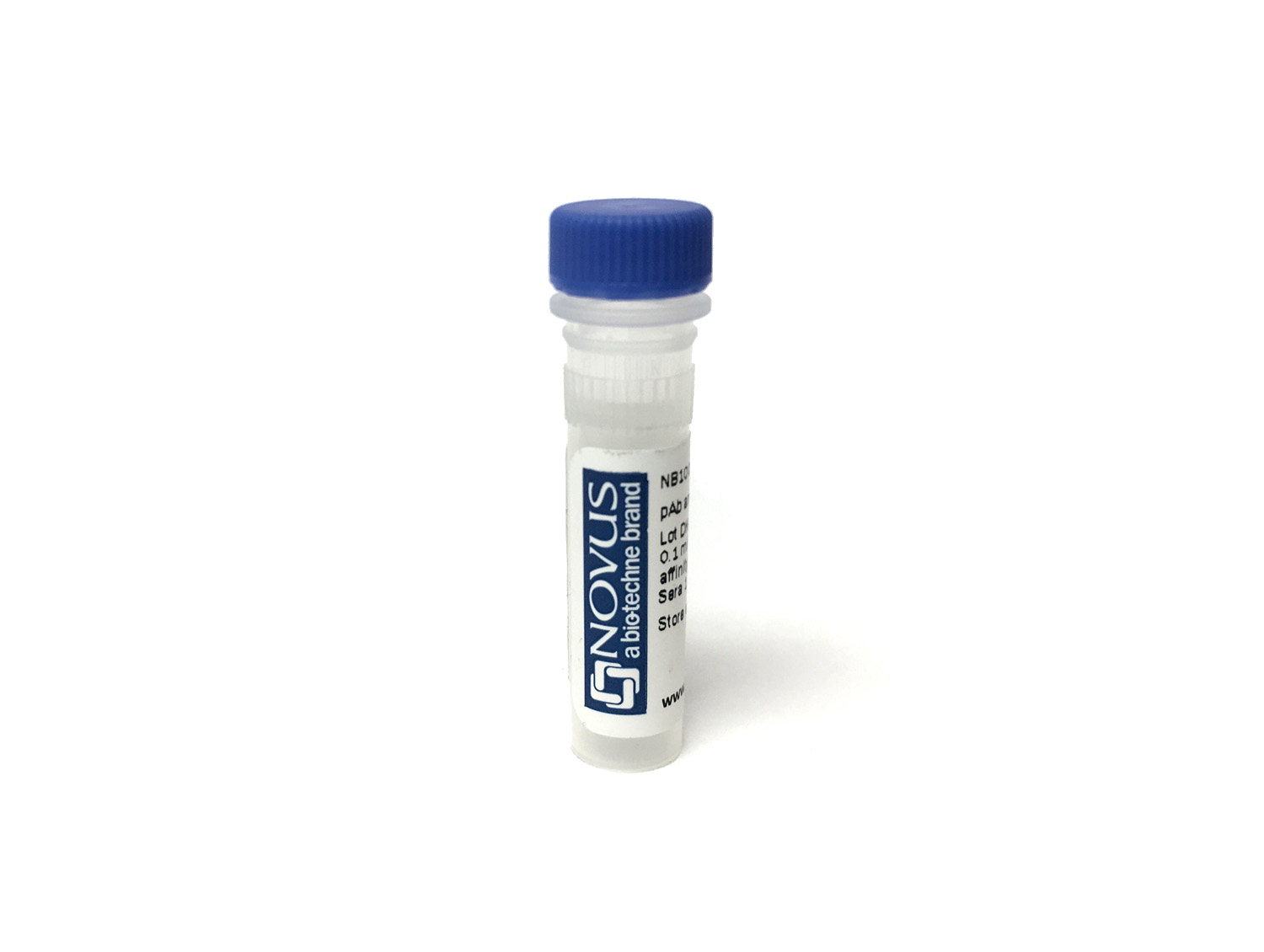Androgen Receptor V7 Products
65 results for "Androgen Receptor V7" in Products
65 results for "Androgen Receptor V7" in Products
Androgen Receptor V7 Products
Recombinant Monoclonal Antibody
| Reactivity: | Human |
| Details: | Rabbit IgG Kappa Monoclonal Clone #DHTR.V7/9125R |
| Applications: | IHC |
Recombinant Monoclonal Antibody
| Reactivity: | Human |
| Details: | Rabbit IgG Kappa Monoclonal Clone #DHTR.V7/9394R |
| Applications: | IHC |
Recombinant Monoclonal Antibody
| Reactivity: | Human |
| Details: | Rabbit IgG Kappa Monoclonal Clone #DHTR.V7/9394R |
| Applications: | IHC |
Recombinant Monoclonal Antibody
| Reactivity: | Human |
| Details: | Rabbit IgG Kappa Monoclonal Clone #DHTR.V7/9125R |
| Applications: | IHC |
Recombinant Monoclonal Antibody
| Reactivity: | Human |
| Details: | Rabbit IgG Kappa Monoclonal Clone #DHTR.V7/9125R |
| Applications: | IHC |
Recombinant Monoclonal Antibody
| Reactivity: | Human |
| Details: | Rabbit IgG Kappa Monoclonal Clone #DHTR.V7/9394R |
| Applications: | IHC |
Recombinant Monoclonal Antibody
| Reactivity: | Human |
| Details: | Rabbit IgG Kappa Monoclonal Clone #DHTR.V7/9394R |
| Applications: | IHC |
Recombinant Monoclonal Antibody
| Reactivity: | Human |
| Details: | Rabbit IgG Kappa Monoclonal Clone #DHTR.V7/9394R |
| Applications: | IHC |
Recombinant Monoclonal Antibody
| Reactivity: | Human |
| Details: | Rabbit IgG Kappa Monoclonal Clone #DHTR.V7/9125R |
| Applications: | IHC |
Recombinant Monoclonal Antibody
| Reactivity: | Human |
| Details: | Rabbit IgG Kappa Monoclonal Clone #DHTR.V7/9125R |
| Applications: | IHC |
| Reactivity: | Human |
| Details: | Rabbit IgG Polyclonal |
| Applications: | WB |
Recombinant Monoclonal Antibody
| Reactivity: | Human |
| Details: | Rabbit IgG Kappa Monoclonal Clone #DHTR.V7/9394R |
| Applications: | IHC |
Recombinant Monoclonal Antibody
| Reactivity: | Human |
| Details: | Rabbit IgG Kappa Monoclonal Clone #DHTR.V7/9394R |
| Applications: | IHC |
Recombinant Monoclonal Antibody
| Reactivity: | Human |
| Details: | Rabbit IgG Kappa Monoclonal Clone #DHTR.V7/9125R |
| Applications: | IHC |
Recombinant Monoclonal Antibody
| Reactivity: | Human |
| Details: | Rabbit IgG Kappa Monoclonal Clone #DHTR.V7/9125R |
| Applications: | IHC |
Recombinant Monoclonal Antibody
| Reactivity: | Human |
| Details: | Rabbit IgG Kappa Monoclonal Clone #DHTR.V7/9394R |
| Applications: | IHC |
Recombinant Monoclonal Antibody
| Reactivity: | Human |
| Details: | Rabbit IgG Kappa Monoclonal Clone #DHTR.V7/9394R |
| Applications: | IHC |
Recombinant Monoclonal Antibody
| Reactivity: | Human |
| Details: | Rabbit IgG Kappa Monoclonal Clone #DHTR.V7/9125R |
| Applications: | IHC |
Recombinant Monoclonal Antibody
| Reactivity: | Human |
| Details: | Rabbit IgG Kappa Monoclonal Clone #DHTR.V7/9125R |
| Applications: | IHC |
Recombinant Monoclonal Antibody
| Reactivity: | Human |
| Details: | Rabbit IgG Kappa Monoclonal Clone #DHTR.V7/9125R |
| Applications: | IHC |
Recombinant Monoclonal Antibody
| Reactivity: | Human |
| Details: | Rabbit IgG Kappa Monoclonal Clone #DHTR.V7/9394R |
| Applications: | IHC |
Recombinant Monoclonal Antibody
| Reactivity: | Human |
| Details: | Rabbit IgG Kappa Monoclonal Clone #DHTR.V7/9394R |
| Applications: | IHC |
Recombinant Monoclonal Antibody
| Reactivity: | Human |
| Details: | Rabbit IgG Kappa Monoclonal Clone #DHTR.V7/9394R |
| Applications: | IHC |
Recombinant Monoclonal Antibody
| Reactivity: | Human |
| Details: | Rabbit IgG Kappa Monoclonal Clone #DHTR.V7/9125R |
| Applications: | IHC |
Recombinant Monoclonal Antibody
| Reactivity: | Human |
| Details: | Rabbit IgG Kappa Monoclonal Clone #DHTR.V7/9125R |
| Applications: | IHC |

![Immunohistochemistry-Paraffin: Androgen Receptor V7 Antibody (DHTR.V7/9125R) [NBP3-23818] - Androgen Receptor V7 Antibody (DHTR.V7/9125R) Immunohistochemistry-Paraffin: Androgen Receptor V7 Antibody (DHTR.V7/9125R) [NBP3-23818] -](https://resources.bio-techne.com/images/products/nbp3-23818_rabbit-androgen-r-nr3c4-mab-dhtr-v7-9125r-2412025872376.jpg)
![Immunohistochemistry-Paraffin: Androgen Receptor V7 Antibody (DHTR.V7/9394R) [NBP3-23821] - Androgen Receptor V7 Antibody (DHTR.V7/9394R) Immunohistochemistry-Paraffin: Androgen Receptor V7 Antibody (DHTR.V7/9394R) [NBP3-23821] -](https://resources.bio-techne.com/images/products/nbp3-23821_rabbit-androgen-r-nr3c4-mab-dhtr-v7-9394r-2412025863643.jpg)
![Immunohistochemistry-Paraffin: Androgen Receptor V7 Antibody (DHTR.V7/9394R) - Azide and BSA Free [NBP3-24295] - Androgen Receptor V7 Antibody (DHTR.V7/9394R) - Azide and BSA Free Immunohistochemistry-Paraffin: Androgen Receptor V7 Antibody (DHTR.V7/9394R) - Azide and BSA Free [NBP3-24295] -](https://resources.bio-techne.com/images/products/nbp3-24295_rb-androgen-receptor-v7-mab-dhtr-v7-9394r-azide-bsa-free-2412025801664.jpg)
![Immunohistochemistry-Paraffin: Androgen Receptor V7 Antibody (DHTR.V7/9125R) - Azide and BSA Free [NBP3-24285] - Androgen Receptor V7 Antibody (DHTR.V7/9125R) - Azide and BSA Free Immunohistochemistry-Paraffin: Androgen Receptor V7 Antibody (DHTR.V7/9125R) - Azide and BSA Free [NBP3-24285] -](https://resources.bio-techne.com/images/products/nbp3-24285_rb-androgen-receptor-v7-mab-dhtr-v7-9125r-azide-bsa-free-24120257592874.jpg)
![Product Feature: CoraFluor Probes for TR-FRET Androgen Receptor V7 Antibody (DHTR.V7/9125R) [CoraFluor™ 1]](https://resources.bio-techne.com/images/products/nbp1-49546cl1_rabbit-rna-polymerase-ii-polr2a-p-thr4-pab-corafluor-1-299202514583923.png)
